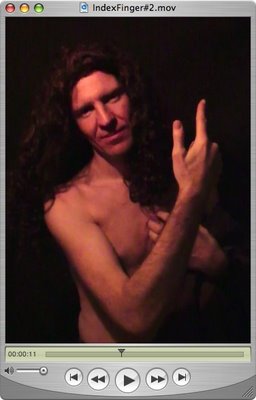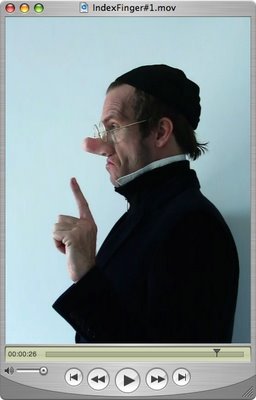
Watch this clip
IndexFinger #3 is part of a photographic video portrait series on the decisive role of a gesture, namely the index finger, throughout the history of religion, philosophy, and pop-culture. #3 is a psycho-dramatic imitation of Raphael's famous fresco "The School of Athens" depicting the major philosophers of ancient Greece. One of its central figures, Plato, serves as a template for the 3rd video portrait, showing him while holding his right arm up and pointing with his index finger towards -- most likely -- the sun as a sympol for the scholastic trinity of the good, the whole, and the truth. Raphael's fresco from 1510-11, housed in the Museum of the Vatican, is frequently a focal point of an inflamed debate among art historians over its historical value, yet it was understood to be one of the central paintings introducing neoplatonism in Italy. The video portraits were created by Richard Jochum and greatly supported by Aphrodite Desiree Navab. Altogether they constitute a tryptich installation which will be part of the group exhibition, "What's Good Must Not Necessarily Be Evil", at Kunstraum Vaduz, Liechtenstein in April/May 2007.






